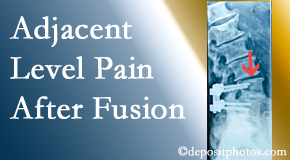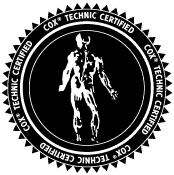Baton Rouge Chiropractic Care of Adjacent Segment Disease After Fusion
“For every action there is an equal and opposite reaction.” A physics rule only? Not at all! It applies to many things in life, including neck and back pain. Adjacent segment disease illustrates this principle! When back pain is dealt with back surgery, particularly back surgery including a spinal fusion, the reaction to the action of the fusion is pressure on the spinal segments above and below the surgical segment. These are the adjacent segments. These segments take over the work of the surgical segment which they were not created to do. These adjacent segments protest with pain of their own. Medical Spine and Sports Injury and Rehab Centers eases these rebellious adjacent segments with gentle, non-surgical, pain-relieving chiropractic treatment.
WHAT IS ADJACENT SEGMENT DISEASE?
Researchers define adjacent segment disease (ASD) as a “disappointing long-term outcome for both the patient and clinician.” Cervical and lumbar spine adjacent segment disease is reportedly between 2% and 4% a year according to one study. It influences reoperation rates after spinal fusion. Risks for ASD are assorted including existing degeneration of adjacent segments, predisposition to degenerative changes, and changed biomechanical forces due to a prior fusion. Non-surgical treatment for adjacent segment disease is the first step as long as progressive neurological deficit is not an issue. (1)
HOW DOES BACK SURGERY INFLUENCE ADJACENT SEGMENT DISEASE RISK?
Types of surgical approaches affect the chances of fusion along with adjacent segment disease. Total disc replacements (TDR) for neck pain conditions using a ball and socket are designed to preserve motion and replicate normal motions of the cervical spine. In a surgery for adjacent segment disease in a patient with a TDR, fusion was noted, but adjacent segment disease was present as well which took the patient back to surgery. (2) Adjacent segment disease after a single level lumbar fusion was a substantial cause of post-surgical issues in a recent report. It commonly indicated the need for reoperation after a thoracolumbar fusion, exposing patients to more post-surgical issues and lengthier recovery periods. (3) Low back pain patients who underwent fusion surgery had an increased risk of post-surgical work-disability after insurance regulation changes compared with low back pain patients who were treated non-operatively or with decompression alone. (4) In one study, the reoperation for ASD was 25.2% for L4L5 fusion though adjacent segment disease at L5S1 after an L4L5 fusion surgery was low. (5) Another study of 1000 patients who underwent back surgery with fusion reported that 9% experienced adjacent segment disease on average at 4.7 years after the first surgery. Adjacent segment disease was most frequent in degenerative spondylolisthesis at the cranial fusion segment. Risk for adjacent segment disease was increased in patients whose fusions were longer. Adjacent segment disease occurred sooner after fusion in elderly patients and in those with degenerative lumbar scoliosis. (6) Chiropractic non-surgical care may meet the plea for non-operative treatment pain after back surgery including back surgery with fusion.
HOW DOES CHIROPRACTIC ADDRESS ADJACENT SEGMENT DISEASE?
Support via research for Baton Rouge chiropractic care of post-surgical continued back pain increases. A study of 32 post-surgical back pain patients treated with Cox® Technic reported improvement of 41% to 57%, greater in those who had combined surgeries like fusions. (7) Another study of Cox® Technic treatment stated that 69 post-surgical continued pain (PSCP) patients experienced active chiropractic care via Cox® Technic Flexion Distraction for an average of 11 treatments over a 49 day period. Pain relief was 71.6% (SD: 23.2). Two years later, the lasting pain relief was 70% while 32 patients needed further care to keep their pain relief. PSCP patients demonstrated pain relief following specific chiropractic distraction spinal manipulation. (8)
CONTACT Medical Spine and Sports Injury and Rehab Centers
Listen to Dr. Lee Hazen on The Back Doctors Podcast with Dr. Michael Johnson about his treatment of a failed back surgical syndrome (aka post-surgical continued pain) patient with the Cox® Technic System of Spinal Pain Management.
Schedule your Baton Rouge chiropractic appointment today. Medical Spine and Sports Injury and Rehab Centers cares for post-surgical continued pain and adjacent segment disease. There is no need to suffer the reaction to the action of back surgery when Baton Rouge chiropractic non-operative care is available at Medical Spine and Sports Injury and Rehab Centers.


